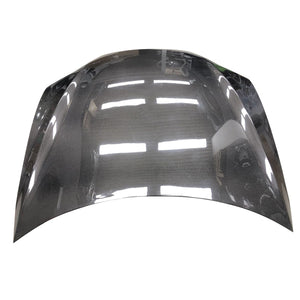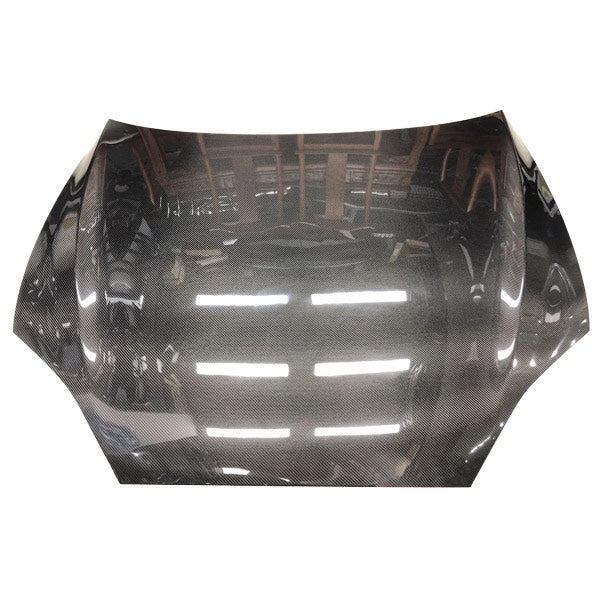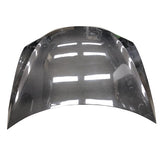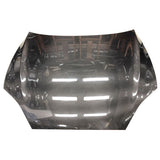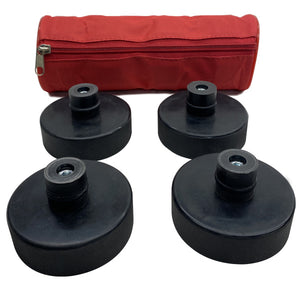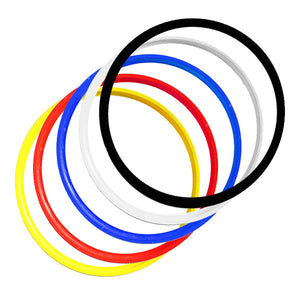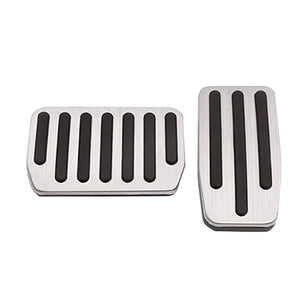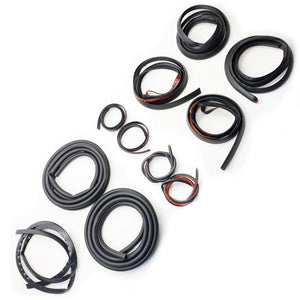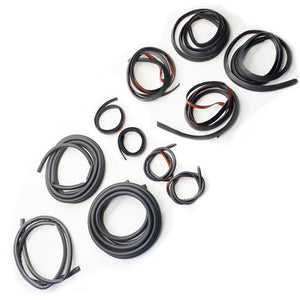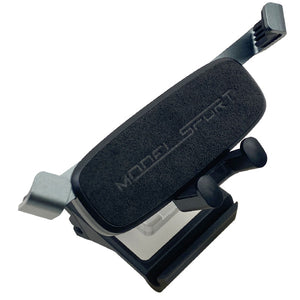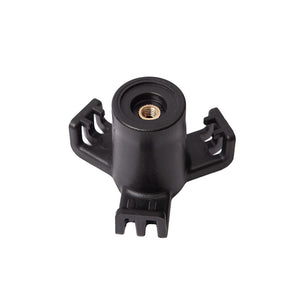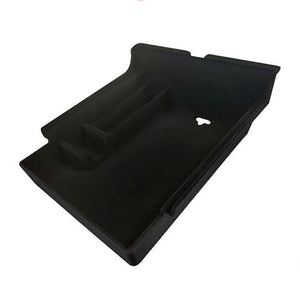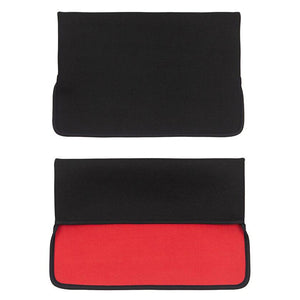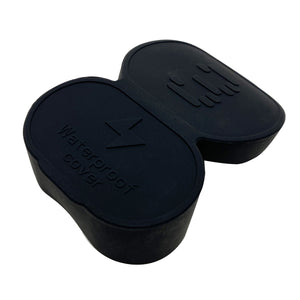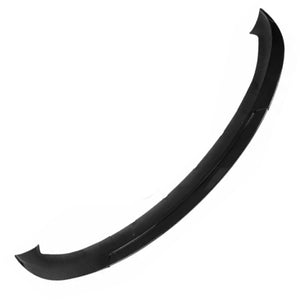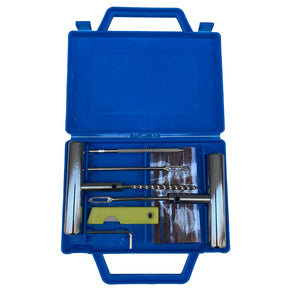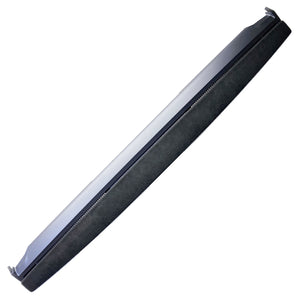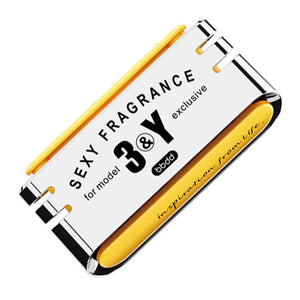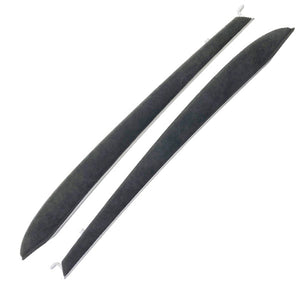Carbon Hood
Tesla Model S
Treat yourself to the ultimate lightness for a Model S hood as well as its extraordinary visual while keeping the original design.
Replace the material, not the design
The production of the carbon version is made from an original Model S bonnet. Several versions are available to you, the clearest difference will be between phase 1 and phase 2, the latter having a longer cover.
The anchor points and the reinforcement structure are also reproduced identically, but the general assembly is more rigid and enduring in bending and torsion, while losing weight!
As we like to remind you, this is the main benefit of carbon fiber composite parts: increased rigidity while having a lighter assembly.
Characteristics of the carbon bonnet for Tesla Model S
- Original design: changes the look of your Tesla
- Perfect finish: in real carbon
- Fits perfectly: takes the exact dimensions of the original
- Is posed in several stages: It is necessary to be at least two to carry out such an installation. Disassembly and reassembly is simple, but it is a large piece.
- Model S from 2012 to 2023 (after selecting the version of your Model S, we will ask you for its registration month)
-
2-year warranty
_________
The advantage of Model Sport regarding the development of carbon? What does "composite material" mean? The usefulness of a carbon part in multiple industries?
Three points are essential to explain the product:
• Go back to the origin of the creation of carbon
• Model Sport, the brand with an unusual sense of detail
• Everything you can customize
You will be able to get a carbon element with confidence.
Composite material: what does it mean?
By characterization, what is called composite material describes the assembly of two elements together, which do not mix, but which produce an object more resistant to shocks/impacts/torsions/flexions than if they are used independently l each other.
Typically you can take reinforced concrete as an example.
What to choose between the many types of carbon or Texalium for electric sound?
Carbon has really abundant variations and above all there are many ways to implement it.
What ordinary people call "carbon" is actually called "a composite of carbon fiber", you should know that in the field of lamination, it is this term that is used.
3K twill in 200gr, the function of carbon fabric:
Let's start our development with the most popular of all: 3K carbon twill. In other words, what is called "twill" is a name given to a certain way of weaving carbon. The figure above is just there to give you an example of this.
One of the arguments for the intense use of twill is undoubtedly its maneuverability: it is able to take the shape of almost any structure.
There are even more accentuated details such as the 3/1, 2/2 and 4/4 criss-crossing, but this is not a technical development, but more of a brief explanation.
The sign annotated "3K" determines the total number of strands that make up a single carbon frame, in total unit: 3000 filaments. Please note an image that will give you an idea of the thickness of a carbon filament: it suggests about 1/20th that of a human hair.
To use the best-known names and varieties on the market, there is 1K, 3K, 6K or 12K. The Tesla community, as well as other automotive sectors and brands, particularly use 3K.
The term "200 gr/m²" suggests that 1 m² of carbon sheet, before treatments, weighs 200 grams. Remember: 3K twill weighing 200 grams per square meter is widely used in the Tesla community, not for its mechanical features, but rather for its aesthetic appearance.
Forged Carbon:
This name forged is reminiscent of other names, but it must be recognized that forged carbon is not innovative and that it owes its name to a unique molding technique.
The "forged carbon" technique is actually very simple and ingenious: the carbon fiber is cut into small pieces and then placed in the mould. To this, the resin is applied for the whole is enclosed (the positive mold and the negative) then put under compression by increasing the temperature of the latter.
Why use this elaboration logic?
Simply to condense more carbon for less resin. All the overflow of resin is ejected during the pressurization phase. So you get a stiffer and lighter part.
Lamborghini is the pioneer in the use of forged carbon in the automotive field. However, it should be noted that forged carbon has been used in the production of warheads since the 1980s.
A material worth explaining: Texalium
It is essential to make room for this material so taken for carbon. However, it is necessary to make the distinction of Texalium.
Really, Texalium is a kind of glass fabric loaded with aluminum to give it a natural highlight. It can thus be tinted either in the mass, by mixing a dye with the resin, or in the varnish.
Essentially decorative use for this finish, because its mechanical provisions are less compared to simple glass fabric (which itself is below carbon). Much better known in the United States, he is just beginning to make himself known in France.
Visually, how do you appreciate the appearance of real carbon?
We are going to provide you with some examples of how carbon fiber can be used.
If you are interested in a product or part, Model Sport can provide you with a quote.
Can carbon be subjected to high loads?
This question requires once and for all a suitable answer. It is very interesting to wonder if the famous carbon is more resistant than another material?
To give you an idea: an aluminum alloy that has a physical volume equal to a carbon part will be less resistant than the latter, all stresses combined.
However, this term “resistant” sums up a fact that should not be generalized. Indeed, a carbon part is very resistant to bending and torsion. But less solid during an impact.
This is why we find such fine parts for the Tesla brand. The dashboard insert for the Model Y or 3 deserves to be mentioned: this element is only useful for its aesthetics (as for the majority of carbon components for Tesla), but this part of more than 1 meter 40 can be produced in only two layers of carbon fabric, with a thickness not exceeding 0.5 mm is sent throughout France without problem.
Why is carbon fiber so expensive?
Let's go back to the production of the carbon fabric to assimilate the price of it. A single carbon fiber already requires quite a remarkable amount of technique. The technique that prevost compared to the others is composed in this way: a specific synthetic fiber, a polyacrylonitrile, will be oxidized and then be calcined to finally deliver what is called carbon fiber.
It takes a lot of energy to achieve such a chemical mutation. In this day and age where more and more environmentally conscious industries are waging war on chemicals, it should be noted that more and more organizations are looking for solutions to continue making carbon fiber, respected for its light, while having an eco-responsible manufacturing logic.
The use of bio-sourced materials is gradually emerging to eliminate chemicals on the one hand and halve the price on the other.
The carbon production operation also requires expensive and bulky specialized equipment, not to mention its weaving. A carbon fiber is 20 times smaller than a human hair, that's what you have to remember. 30 euros per square meter is the average value, at the time of writing, that you can find a 200gr/m² 3K twill carbon sheet.
Added to this is the number of layers and the price of the resin, which is not comparable in quality and price. Finally, the intervention of a qualified laminator is essential. This in order to carry out the operations in good conditions.
Model Sport carbon and its unique properties
A part that we have the chance to master, because we scrupulously analyze all the stages of production. It takes knowledge of the actual shape of an element to be able to ensure an acceptable result.
It is for this reason that the creator of the Model Sport brand, designer and bodybuilder, makes every effort to deliver its know-how in the field of carbon elements.
Fabric or pieces of carbon for Tesla?
It is an indisputable fact, in the 21st century carbon is mainly used for its finish, more than for its primary application: its mechanical capacities and its lightness.
We regularly talk about twisting and bending endurance, however, on a Tesla these skills will be forgotten. These are elements aimed at conveying the sportiness of the American brand.
For the entire Tesla range, the constraints generated on the elements, even a body kit, will be largely absorbed, even on so-called "low-end" carbon. To date, there are different categorizations of carbon stiffness. But the most used being the "HR" or High Resistance for flexibility and versatility. To design and manufacture in series the carbon elements of Model Sport, it is indeed the HR that will be discussed.
It differs from HM (High Modulus) which will certainly be lighter, but also much more brittle, so much so that it almost always has to be combined with HR. Forged carbon indicates this use primarily for its appearance than for its layout, however, it does have multiple characteristics.
What is the best resin to use?
This is THE most crucial difference that Model Sport carbon parts can boast of making, an epoxy resin making the difference.
Polyester type resin is regularly used for mass production lamination on fiberglass parts. This is also prioritized on carbon parts which require high heat resistance.
To give you an illustration, polyester is used to make carbon cartridges for motorcycles. With regard to the elaboration of carbon parts subjected to potential loads, the Epoxy resin will give to the whole of the composite material a greater resistance.
Numerous tests have confirmed that one resin stands out among many others: anti-UV epoxy resin. It does not tarnish over time and maintains the true look of carbon. Apart from its more translucent appearance, the anti-UV Epoxy resin will resist solar attacks. And this detail really makes all the difference, because without this treatment, you will have a carbon part that will yellow over time.
It will be perfect during installation, but beware of periods of heat wave, otherwise you will notice a yellowish and opaque appearance in a few years. Several parameters are taken into account when buying a resin, this is what will partly determine its initial price: its ease of application, its long-term hold and its production quality.
For the French market, the selling prices of the resin are given below:
• 1kg of Polyester resin = 8 to 10€
• 50 to 60€ for the kilogram of Epoxy resin
A coat of paint to guarantee an optimal finish
This is of course the final phase of a customization project. In the interests of ultimate quality, we had produced parts without topcoats at the very beginning, which required uncompromising production quality the first time around.
Tesla's nerve center is to help reduce pollution, so the high scrap rate of this production method was ultimately a problem. To obtain a more "standard" result in the manufacture of our carbon elements, we have therefore started to use a higher quality varnish.
The gloss varnish is finely polished before shipping and the matte varnish applied delicately to have a homogeneous configuration over the entire piece.
The kind of carbon on Tesla S and X vehicles
At first glance, the two vehicles all have similar interior elements. However, a certain number of parts remain very individual depending on the year of registration.
In most cases, we therefore call the owner, after ordering, to find out more information about the vehicle.
Model S and X interior
Tesla component customization is much more popular on the Model 3, but your Model S and X can also receive interior upgrades. Inserts such as for the dashboard, the central console or the part of the cup holder.
Forged carbon or 3K twill can enrich a sports steering wheel, but also leather or Alcantara trim will complete the development of this one. The latter will have a fairly precise customization, which many other accessories will be able to benefit from in the future.
Exterior parts of Model S and X
The most sought-after body element on the Model S is undoubtedly the Performance Spoiler. Always keen to make a difference, the matt Performance spoiler will benefit for the Model Sport version from a reworked bonding surface and a lighter internal structure.
Once the spoiler is in place, no difference is visible. At the time of writing, the Plaid version of the new Model S is also being manufactured. Carbon adapts to all supports. Although it is very often used in the particular field of the automobile only for its appearance, it will find its place on elements such as the grille or the hulls of mirrors, with a slight loss of weight in passing.
The most massive carbon part offered is the bonnet for Model S. A surface long enough to allow us to highlight the inimitable depth of carbon fiber.
Although 3K twill carbon is the most common, more "exotic" elaborations such as Texalium may be the subject of a study, in this case contact us by phone or email.
On the Tesla Model 3 or Y, what type of carbon construction?
The Tesla Model 3 is the quintessential electric sedan of its era, with an impressive number of carbon-based upgrades.
Tesla's two best-selling electrics share a lot of similarities.
What's inside the Model 3 and Y
Part of the Tesla community is undoubtedly familiar with carbon inserts for Model 3 or Y. It is an exercise in strength to be able to mass-produce carbon elements that can cover a part while giving the impression that there is no addition. The inserts find here all their interest and their quality of production.
It is after many trials, errors and corrections that we now produce inserts that meet your expectations. Precise cutting and gluing as close as possible to the components with a perfect finish, this is the recipe for a successful carbon insert for Model 3 or Y.
Carbon replacement parts, however, are making more and more careful owners happy. For purists who love beautiful parts with meticulous manual work, the carbon dashboard and door trim will satisfy you.
The body components of a Model Y or 3
As with the interior, the exterior of the Model 3 and Y has a large number of possible modifications. Here too, in a 3K twill or forged version, you will have the choice between the matte or shiny finish.
One of the most popular elements and undoubtedly the Performance spoiler in its matte version. For Model 3 or Y, it will always have a benefit compared to other carbon parts.
This will take up its final position on the edge of the trunk and will extend the lines of your Tesla. A more radical customization could be the replacement of the front cover with a carbon version. Two advantages: weight loss and an extraordinary style.
- 🇫🇷 Gestionnaire Français
- Commandez directement au Fabricant ou au Distributeur
- Payez que votre produit (pas de frais de stockage ni de taxe territoriale)
- Livraison dans toute l'Europe !
Vous remarquerez que le bouton au-dessus vous redirige vers un des distributeurs ou fabricants du produit.
La major partie des accessoires Tesla proviennent de Chine, commander via les plateformes Aliexpress, Alibaba, Amazon, Hansshow ou Jowua vous donnera la possibilité d'obtenir le produit sans intermédiaire.
Les produits vendus en France ou en Europe proviennent du même fabricant Chinois (ou autre), mais avec une marge supplémentaire servant à payer les frais de fonctionnement de la société.
Cependant, l'avantage de commander à proximité est d'obtenir un délai de livraison plus rapide (néanmoins nous proposons aussi des produits expédiés directement depuis des stock Français ou Européens)
Model Sport a initialement commencé en faisant du stock en France, nous connaissons donc quels sont les fabricants de confiance et leur méthode de travail. Si bien que nous les citons avec leurs accords : MAOFA, BFB carbon, Yute Technologie, DCR Tuning, LITA Accessories, Jogon, Ever carbon, Carbonss Tuning, Jowua.
Ces fabricants, parmi quelques autres, sont les plus actifs et sérieux dans leur qualité de fabrication. Nous vérifions que les produits proviennent systématiquement de notre liste de fabricant. Ainsi, que vous commandiez via un distributeur Aliexpress, Amazon ou autre, nous savons que le produit sera de bonne facture.
